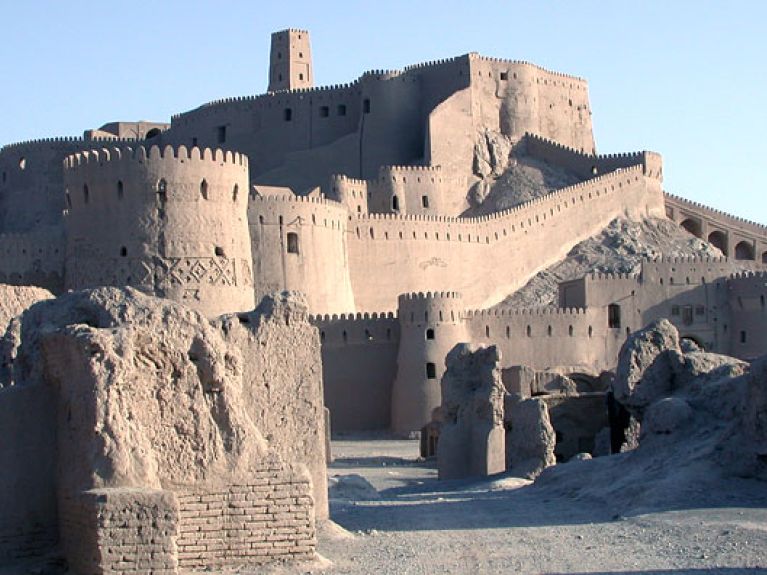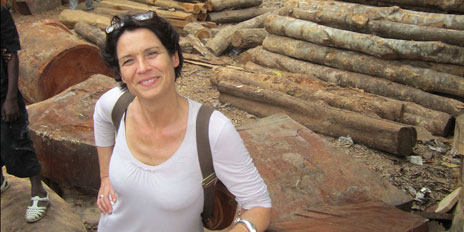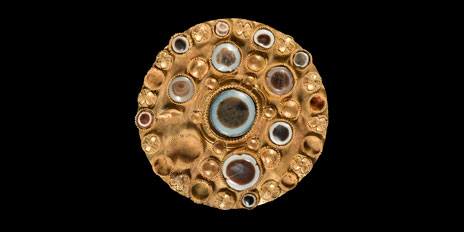“This collaboration has opened worlds”
A new look at Iran: in the exhibition Iran – Ancient Culture: Between Water and Desert, the Federal Art and Exhibition Hall in Bonn presents largely unknown epochs of the country’s history. An interview with the exhibition manager Susanne Annen on its challenges and highlights.


Preparations for Iran – Ancient Culture: Between Water and Desert lasted nearly four years, a fairly long time. What are the challenges of the exhibition?
In this exhibition we’re presenting the early culture of Iran, about 8,000 years of history, extending from the transition of man from a nomadic to a sedentary life up to the first great empire of the Achaemenids in 550 BC. The western foothills of Iran belong to the region of the so-called “Fertile Crescent”, where human beings first became sedentary many thousands of years ago. This makes the area highly significant and incredibly exciting. The Iran exhibition is part of our “Series of Great Cultures”, which treats cultural history and archaeology. The time before the Achaemenids is relatively unexplored; that attracted us to examine it scientifically. We’ve worked with researchers from all over the world. The curator of the exhibition, Barbara Helwing, has been director of the field office of the German Archaeological Institute (DAI) in Teheran for many years and has really dug into the subject. I travelled up and down the country and sought the most beautiful and exciting objects in provincial museums. Such an elaborate project can succeed only with a lot of blood, sweat and tears.
What highlight should the visitor make sure not to miss?
We’ve received on loan very many beautiful chlorite vessels from southern Iran, from excavations in the province of Kerman. In the final room of the exhibition, we show gold jewellery from the tombs of two princesses of the neo-Elamite period of the 6th century BC. Visually, these pieces are incredible! They have never before been shown outside Iran and never in this combination. Normally, they lie in a safe in Teheran. They are really a highlight.

The Art and Exhibition Hall was opened in 1992 as an artistic centre that was to be marked by exchange. It has no collection of its own and conceives each exhibition freshly and differently. What has this meant for your work?
We offer a tremendous diversity of themes. The Iran exhibition, for example, is running simultaneously with an exhibition about the artist Katharina Sieverding and another on comics, manga and graphic novels. This range is a great treat and a great opportunity!
For the Iran exhibition we prepared trilingual wall texts, audio guides and a multimedia presentation: it’s only with films and reconstructions that you can understand what things looked like then. Because very little is preserved from pre-historic times. To present the world of 8,000 years ago is a challenge! Owing to the size of the country alone, various developments in northern and southern Iran sometimes took place simultaneously.
The exhibition was designed in cooperation with the National Museum of Iran and the Iranian cultural and tourism organization ICHTO. What was the collaboration like, and are you planning something for the future?
We’ve been working with our Iranian colleagues for nearly four years – and the collaboration has opened worlds! The Iranian archaeologists and researchers see it as a great opportunity to present their country to Europe from a different perspective. We have, after all, a common history. Before the sanctions against Iran were lifted, the country wasn’t accessible to many researchers. We’re therefore delighted that the exhibition has now finally become possible. Our exhibition catalogue will be published in Persian as well as German so that young researchers in Iran can also use it.
Two projects have already been planned for the future: the establishment of a regional museum in Yazd that meets current conceptual and conservation standards and of an object database at the Museum for Islamic Art in Teheran. Both projects are sponsored by the Gerda Henkel Foundation and will be developed and realized in cooperation with the Federal Art and Exhibition Hall, Museum for Islamic Art of the State Museums of Berlin and ICHTO.
Interview: Sarah Kanning
The Federal Art and Exhibition Hall in Bonn
“Visitor Magnet: the Art and Exhibition Hall in Bonn”
Bilateral collaboration with Iran
“Discovering a different world – young people seek exchange with Iran”
Gerda Henkel Foundation earned the accolade “2017 Academic Foundation of the Year”
© www.deutschland.de